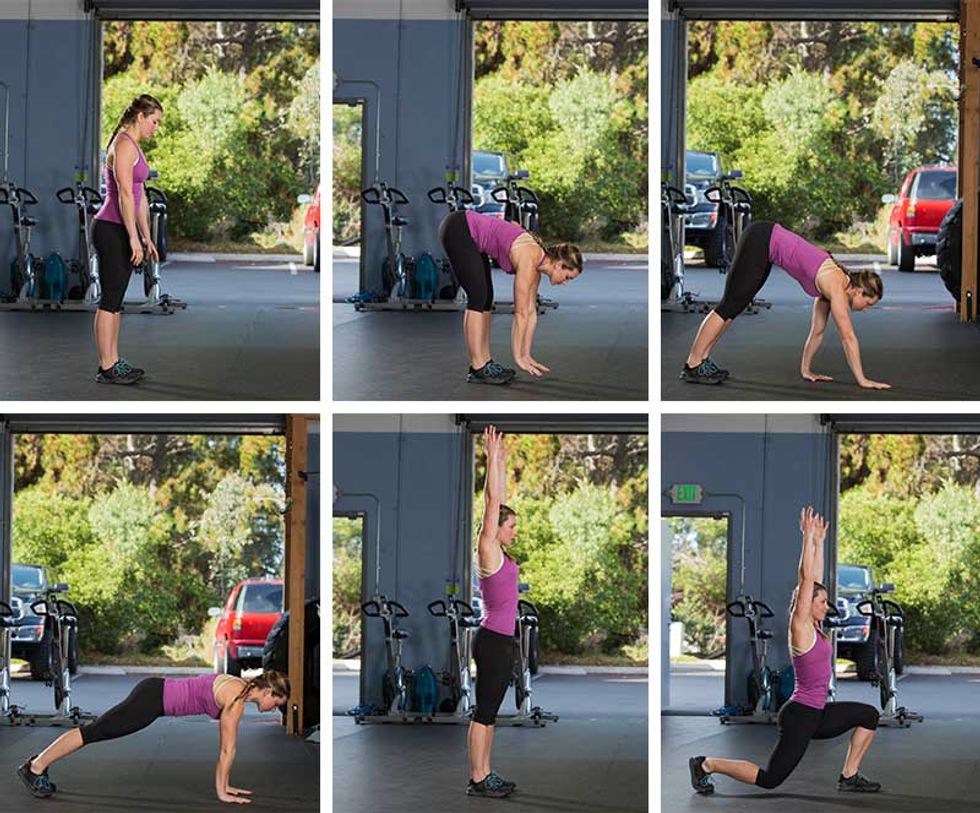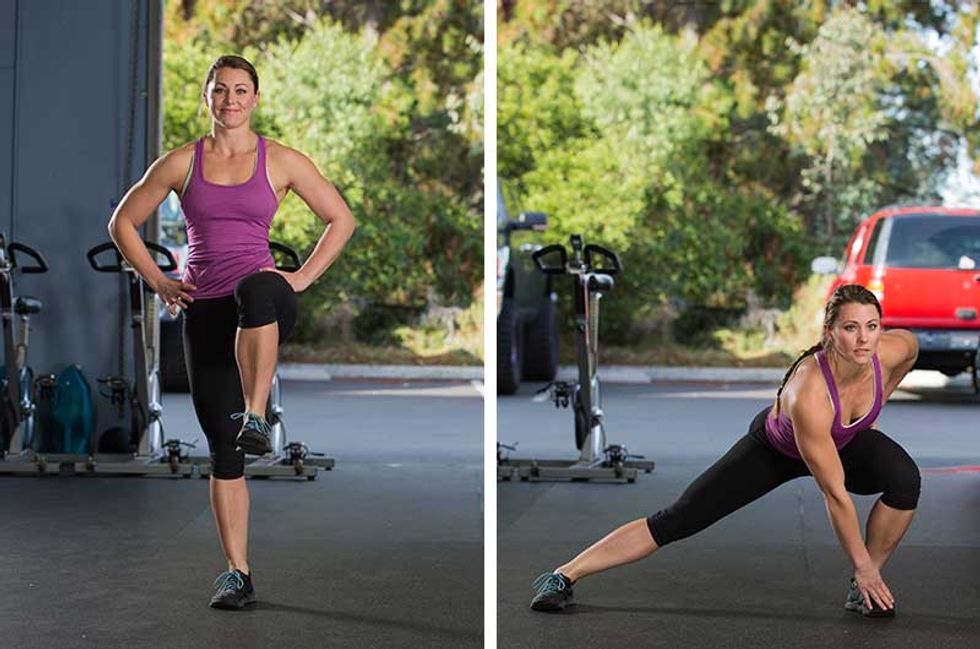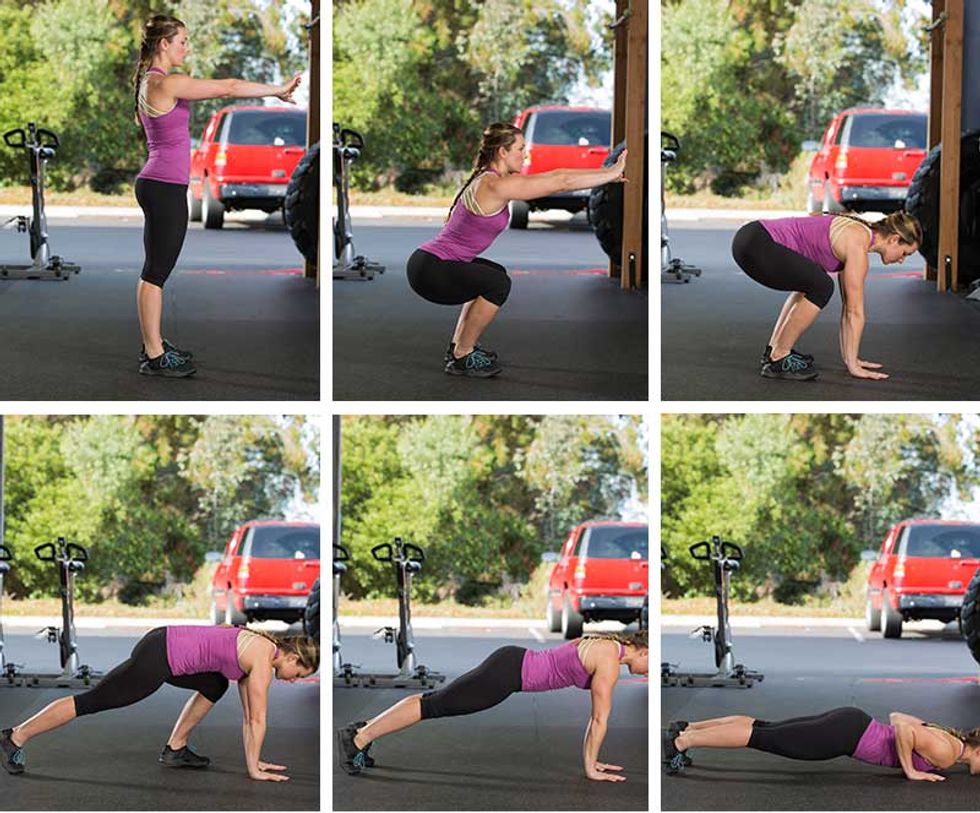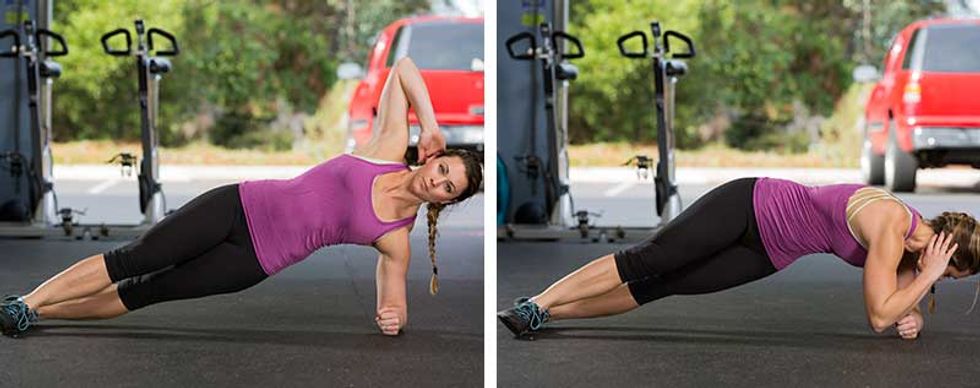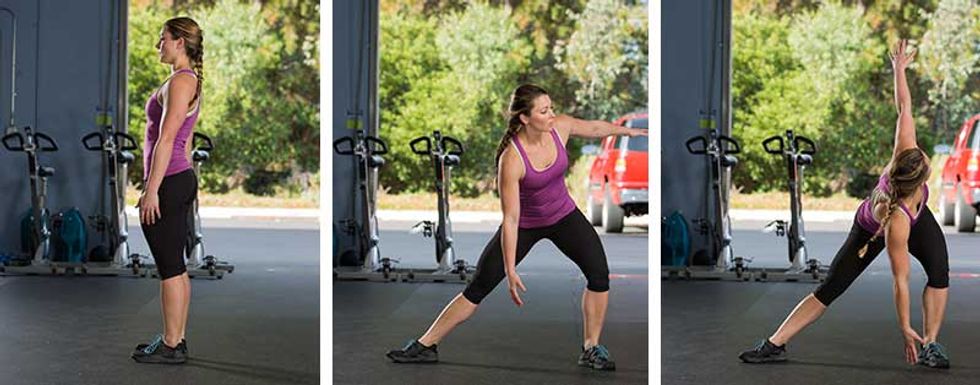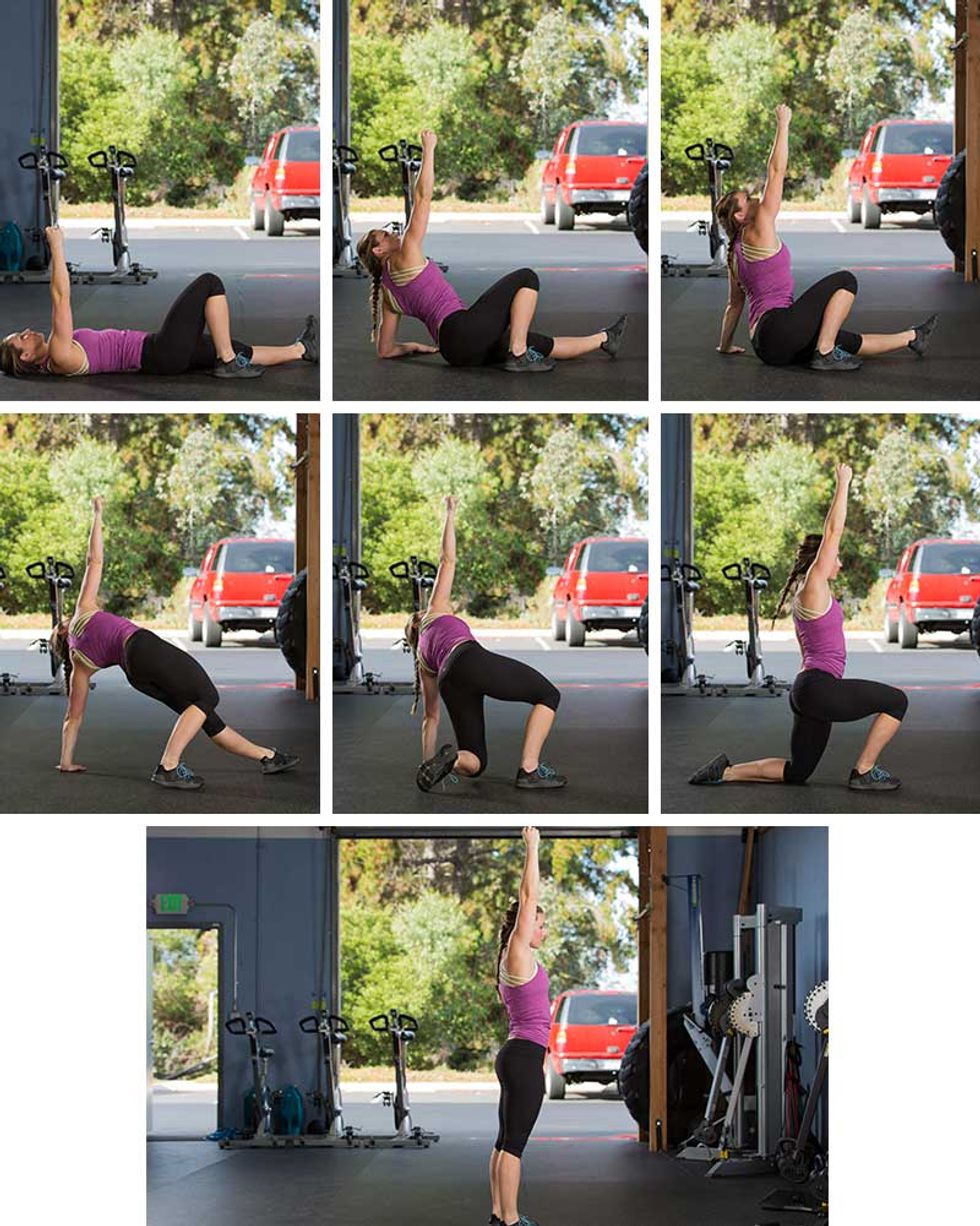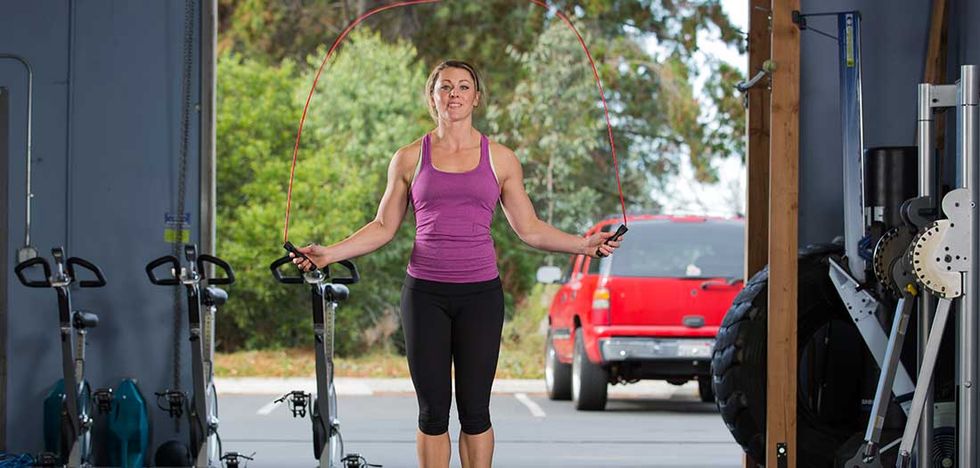The mission of the American Council on Exercise (ACE) is to get people moving.
by Pete McCall, MS, CSCS, ACE Certified Personal Trainer
When people decide they want to lose weight, they typically turn to cardio or aerobic training, like running on a treadmill or sweating buckets in an indoor cycling class. But while cardiovascular exercise can be effective for burning the calories required for weight loss, it's not always the best option for those who don't enjoy it.
Fortunately, there is another way to use exercise for weight loss: circuit training. Circuit training involves a series of resistance-training exercises for different movements or body parts with little to no rest between each exercise. An effective circuit alternates between upper- and lower-body parts or movements—like from push-ups to pull-ups for muscles responsible for different movements in the same region of the body.
The following sample workout can help you get started with circuit training so you can reach your weight-loss goals without having to live on a cardio machine.
You can perform this body-weight circuit from the comfort of your own home or in a limited space in a commercial fitness facility. These exercises combine multiple movements and muscle groups to increase the oxygen demand and subsequent energy expenditure.
1) Inchworm Walkouts to Reverse Lunge With Arms Overheard
Start with your feet hip-width apart and knees slightly bent. Hinge at the hips, place your hands on the floor and walk forward to come to a high plank position. Hold for 5 seconds, walk back with the hands and return to a full standing position while reaching both arms overhead. Next, step backward into a reverse lunge with the right leg. Pull yourself forward with the left leg and then step immediately back with the left leg; return to standing. This is one repetition. Complete 6 to 10 repetitions (start at six and work up to 10).
2) Side Lunge to Single-Leg Balance
Start with your feet hip-width apart. Step with the right foot to the right. As the right foot hits the ground (make sure the right foot is parallel to the left foot), push your weight back into your right hip. With your left hand, reach for your right foot. To return to standing, press your left foot into the ground to pull yourself up. At the top, contract your glutes to hold a single-leg balance for 5 to 10 seconds. Complete 8 to 12 repetitions before alternating sides.
3) Squat to Push-up
Start with your feet shoulder-width apart. Push your hips back to lower into a squat. As you sink your weight back, bring both hands to the inside of your legs and place them on the floor. With your hands pressed into the floor, step back one foot at a time so that you are in a high-plank position. Brace your abdominals and keep your body straight as you lower yourself into a push-up. At the bottom of the movement, press both hands into the floor to return to the high-plank position. Step forward, one foot at a time, to return to standing position. Complete 6 to 8 repetitions and work up to doing 12 to 15 reps.
4) Side Plank With Rotation
(Note: This exercise is NOT recommended for individuals with shoulder or back pain.)
Begin by lying on your right side with both legs on top of one another. Place your right elbow directly under your right shoulder. Squeeze your legs together, contract your glutes and push your left hip up so that you are balanced on both feet and your right elbow (this is the starting position). Place your left hand behind your head and rotate your left elbow down toward the floor to rotate your trunk. Return to the starting position and repeat 6 to 8 times and then switch sides.
5) Transverse Lunge With Reach to Foot
Begin standing with your feet hip-width apart. With your right foot, step back and rotate your right hip so that when it lands your right foot is pointing in the 4 o'clock direction. Once your foot is on the floor, reach down for your right foot with your left hand while reaching for the sky with your right hand and rotating your trunk to your right. To return to standing, press your left foot into the floor and pull yourself back to the upright position. Complete 8 to 10 reps on one side before switching sides; work up to completing 12 to 15 reps with each leg.
6) Body-Weight Turkish Get-up (TGU)
The best description for the TGU, as it's commonly called, can be seen here. Instead of holding a weight, simply hold your arm extended and outstretched to receive the benefit of the exercise for your hips, obliques, spinal stabilizers and shoulders. Start with 4 to 6 reps on each side and work up to 8 to 10.
7) Cardio Exercise
After you have completed the circuit, jump rope or perform jumping jacks for 45 seconds, rest for 15 seconds and repeat 3 times. Rest for 90 seconds before performing the next complete circuit (including cardio).
Start with 2 circuits every other day and allow 2 weeks for your body to get used to the movements. After the first 2 weeks, continue doing the workout every other day, adding an additional circuit each week, gradually working up to 5 circuits. After your reach 5 circuits, test yourself to see how many circuits you can complete in a specific amount of time (such as 15, 20 or 30 minutes).
The Benefits of Circuit Training
1. The body burns 5 calories of energy to use 1 liter of oxygen. Circuit training can use most of the muscles in the body, which significantly increases oxygen consumption when compared to a mode of cardio exercise relying primarily on the lower body. Any mode of exercise that increases oxygen demand also increases energy expenditure, making it an effective strategy for weight loss.
2. Exercising at a moderate-to-high intensity (where breathing is much faster than normal and saying more than a couple of words at a time can be difficult) for more than 50 to 60 minutes at a time could lead to burning muscle instead of fat. At a higher intensity of exercise, the body will use primarily carbohydrate for fuel. Once this carbohydrate is depleted, the body uses the hormone cortisol to convert protein to fuel in a process called gluconeogenesis. When this happens, less protein is available to repair muscle tissue damaged during the exercise.
3. Doing too much cardio training could increase levels of abdominal fat. During low-intensity exercise, cortisol helps mobilize free fatty acids for use as energy. Fat takes longer to convert to energy than carbohydrates, which is why higher intensities rely on carbs for fuel. When cortisol levels are elevated, there are more free fatty acids in the bloodstream. The ones that aren't used for energy can be redeposited in abdominal fat to be stored for later use.
4. While resistance-training circuits can increase lean muscle mass throughout the body, most modes of cardio training involve primarily leg muscles. Resistance training exercises stimulate the type II, fast-twitch muscle fibers responsible for improving strength and size. Increasing activation of the type II fibers can result in larger, more defined muscles throughout the entire body.
5. Higher levels of lean muscle mass equate to a higher resting metabolism, which means the body will burn more calories while at rest. At rest, 1 pound of muscle can burn up to 7 calories of energy during a 24-hour period. Adding 5 to 7 pounds of lean muscle mass can increase resting metabolism up to 50 calories a day or 350 calories over the course of a week. Given that the body uses approximately 100 calories to walk a mile, this can be considered the equivalent of taking a 3.5-mile walk.
Take Weight Loss Efforts Up a Notch
To increase energy expenditure for weight loss, combining circuit training with cardio exercise can be extremely effective. For example, after completing a circuit of resistance-training exercises, hop on a cardio machine for just 3 to 7 minutes of steady-state, moderate-intensity exercise. The cardio exercise should focus on the aerobic energy system—your breathing should be quicker than normal, but you shouldn't be out of breath.
This article originally appeared at ACEFitness.com.



